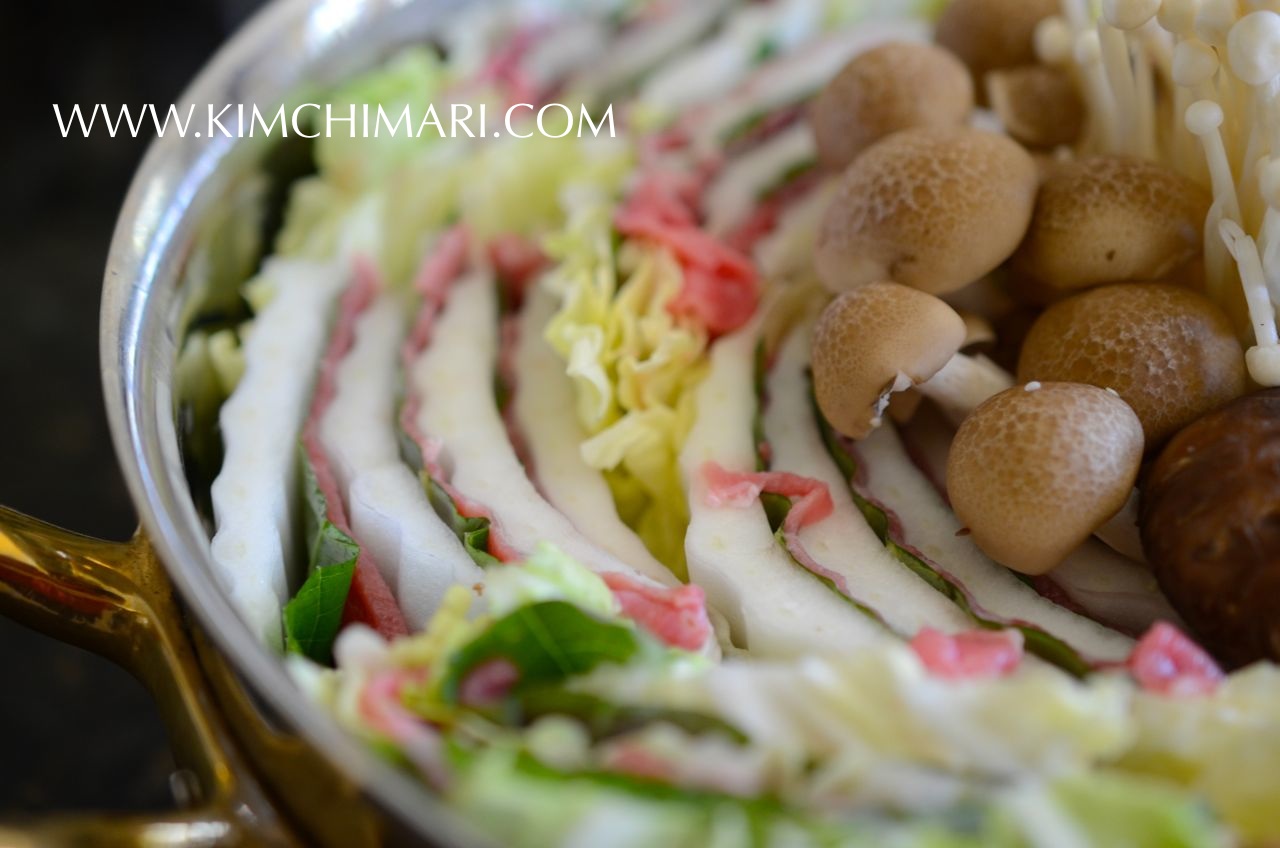
Shabu Shabu (see my Shabu Shabu Korean Style recipe) and really good Japanese Nabe was one of the foods I missed the most when I first came to US some 20+ years ago. Although these foods have origins in Japanese cuisine, just like how Pizza has totally become part of American food, shabu shabu and nabe have become very much a common food in Korean food scene. In Gainesville, Florida (where I lived as graduate student with my husband) there was no restaurant that served good Japanese or Korean at the time. In fact, in those days, there were very few Asian restaurants to begin with. I think Gainesville only had 1 Korean restaurant, 2 Japanese restaurants and a few Chinese restaurants in the early 90’s. But definitely no restaurant served shabu shabu or good nabe (stew).
We sometimes drove for hours to Orlando or Jacksonville in search of some better Korean food, only to be disappointed a lot of times because it was not what I was imagining and hoping to taste. Kimchi jjigae that used kimchi that was not sour tasting and was seasoned with vinegar to imitate the taste, japchae/chopchae that was refrigerated and reheated, fish maewoontang that used frozen fish, I mean.. it kind of upsets me even now just to think about those bad Korean foods that we ordered and ended up paying with our precious grad student stipends. This is probably why I ended up learning to cook so many Korean dishes at home because there was no other way to eat them.
Now jumping 20 years ahead in time, in 2014, while I was in Korea, I was watching one of my favorite TV program on the Korean cooking channel Olive which was 오늘 뭐먹지? (Ohneul Mwo Meokji?). It means “What shall we eat today?” It’s a show hosted by two famous Korean celebrities: Sung Si-kyung (singer) and Shin dong-yup (comedian). They invite chefs and cooks from various restaurants to learn their famous dishes by cooking together. I liked the show because they cook all different cuisines – Italian, Japanese, Chinese, Korean,..and you also get to see these guys goof things up even though they try to really follow the instructions. And one time I saw this Mille-Feuille Nabe (Shabu Shabu) being made on the show and I really wanted to try making it at home.
This Mille-Feuille Nabe (also called Thousand Leaves Hot Pot) not only looks pretty and taste great, it also overcomes one downside of shabu shabu – having to wait while the food is being cooked at the table. And then wait some more until the next batch is cooked…Shabu Shabu done this way means everything is cooked all at once which makes it great for large and/or impatient families. 😉 Mille-Feuille Nabe (Shabu Shabu) is also great as a party menu because you can prepare everything ahead of time and just cook it right after your guests arrive. Recipe here is a modified and more accurate version as some parts don’t have any exact measurements and they also use some ready made sauces that are not easily available outside of Korea.
Above is an individual serving of Mille-Feuille Nabe (Shabu Shabu) with broth, garnished with fresh perilla and enoki mushrooms.
Serving suggestions
- For a party, assemble the ingredients ahead of time in the pot and also make the stock and keep them separately refrigerated up to a day. Take out the pot and the stock about 1 hr before and bring to room temperature. 10 min before guests are ready to eat, boil the nabe or cook at the table.
- Serve the sauce in individual sauce bowls so guests can dunk in the sauce before eating.
- Either buy or serve creamy peanut sauce in addition.
- Kimchi or a spicy, garlicky dish goes great with this nabe.
- Some people may prefer to have more meat – double up on the meat for extra meaty flavor.
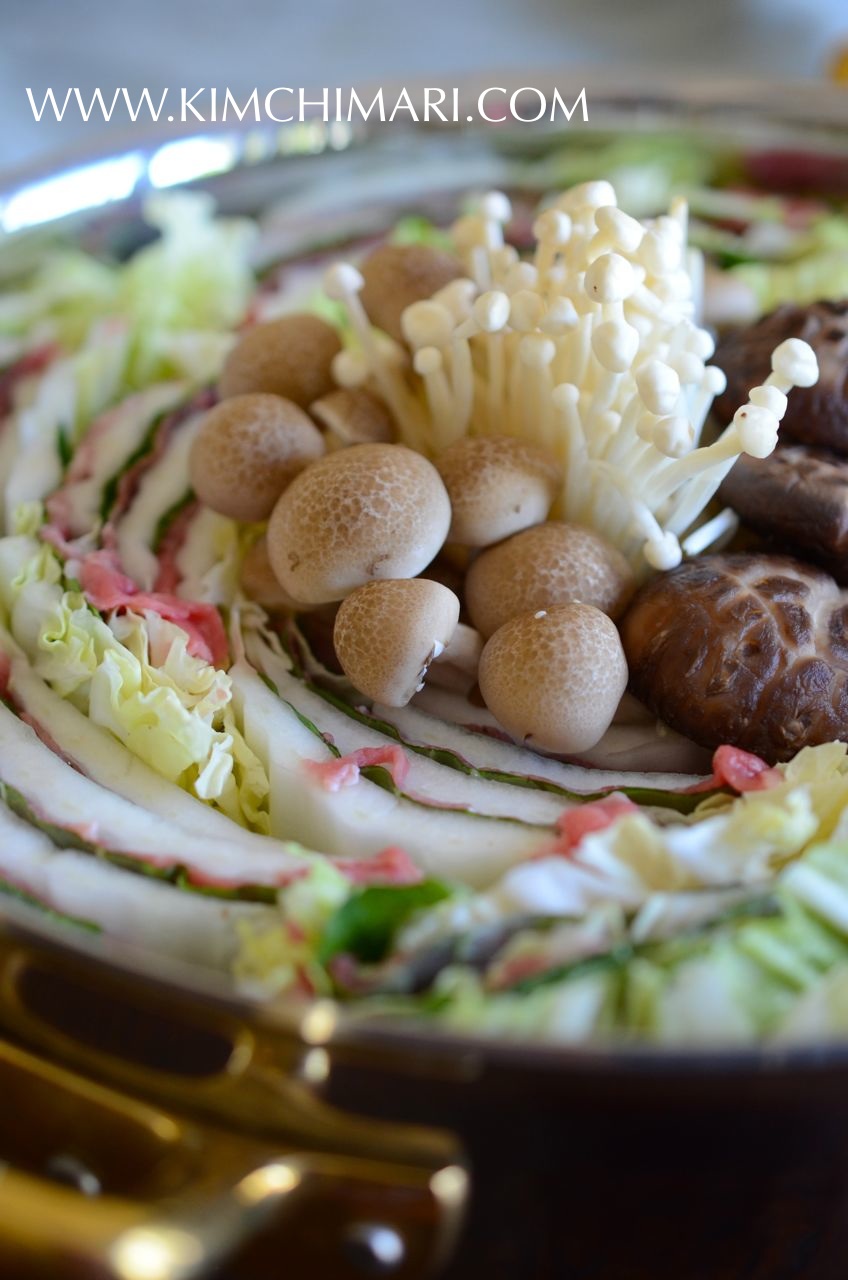
Mille Feuille Nabe (shabu shabu) ready to cook 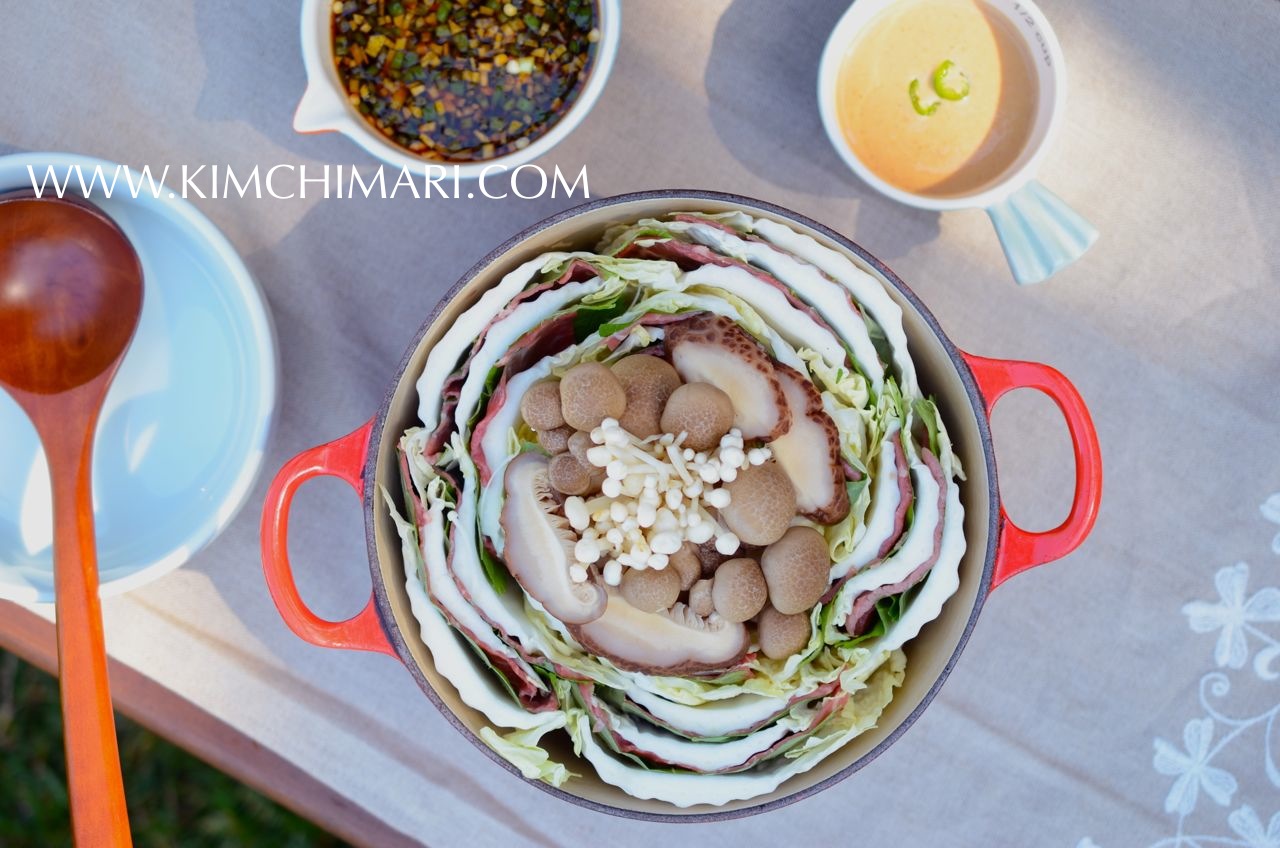
smaller individual serving size mille-feuille nabe with sauces
Easy and Pretty Mille-Feuille Nabe (Shabu Shabu)
Ingredients
- 1 lb very thinly sliced beef - prime rib eye for shabu shabu
- 1 napa cabbage
- 1 - 2 package perilla leaves (25 - 30 leaves)
- 3 dried shitake mushrooms
- 3.5 oz Brown Beech Mushrooms (Buna Shimeji) (1 pack)
- 3 oz Enoki mushrooms (1 pack)
- 6 oz bean sprouts (1/2 pack)
- 2 green onion
- 1 pack of Konnyaku or Miracle Noodles
- 1 lemon (for sauce)
For Stock
- 10 Cups water
- 1 piece dried kelp (다시마 dashima, about 4 x 3 in / 10 x 7 cm)
- 15 pieces dried anchovies
- 1 piece radish (palm-sized piece, 1 in / 2.5 cm thick)
- 1/2 onion
- 2 dried shitake mushrooms
- 1 Tbsp dark soy sauce (season to taste at the end)
- 1-2 tsp sea salt (season to taste at the end)
For Sauce
- 1 Tbsp regular dark soy sauce
- 1 Tbsp rice vinegar
- 1 Tbsp lemon juice
- 1 Tbsp chopped lemon peel
- 1 Tbsp chopped fresh garlic (optional)
- 2 Tbsp anchovy stock (from above)
- 1 Tbsp maesil syrup (plum extract syrup, or 2 tsp sugar)
- 1 Tbsp chopped Korean green chili pepper or any other green chili
Instructions
- Soak dried shitake mushrooms in warm water to fully rehydrate.
- Start stock by adding water, radish, anchovies, kelp, dried mushroom, onion to stock pot. Bring to boil and quickly lower to simmer. Simmer (should NOT be bubbling) for at least 30 min and season with 1 Tbs soy sauce and 1~2 tsp sea salt to taste. It should taste slightly under seasoned. Cool.
- Clean, wash cabbage and rip out the outer bigger leaves. Drain.
- The beef slice used here is what's sold as Chadolbaegi (see my Know your beef cut! post for more info on Korean beef cuts). Usual Chadolbaegi cuts have more fat but this one didn't. The original recipe uses both chadolbaegi (brisket cut against the grain) and rib eye cuts. I only wrote rib eye in the ingredients list because I found these chadolbaegi slices can get a little tough since there is little fat. If you want to have tender, melt in your mouth beef slices, use well marbled rib eye or tenderloin instead.
- Layer the bottom of the pot with bean sprouts. Add more or less bean sprouts to adjust the height of the stacks. Turn stack sideways and fill up the pot from the edges and work your way towards the center. It looks most pretty when the stacks fill up almost to the top of the pot and the stacks are staggered.
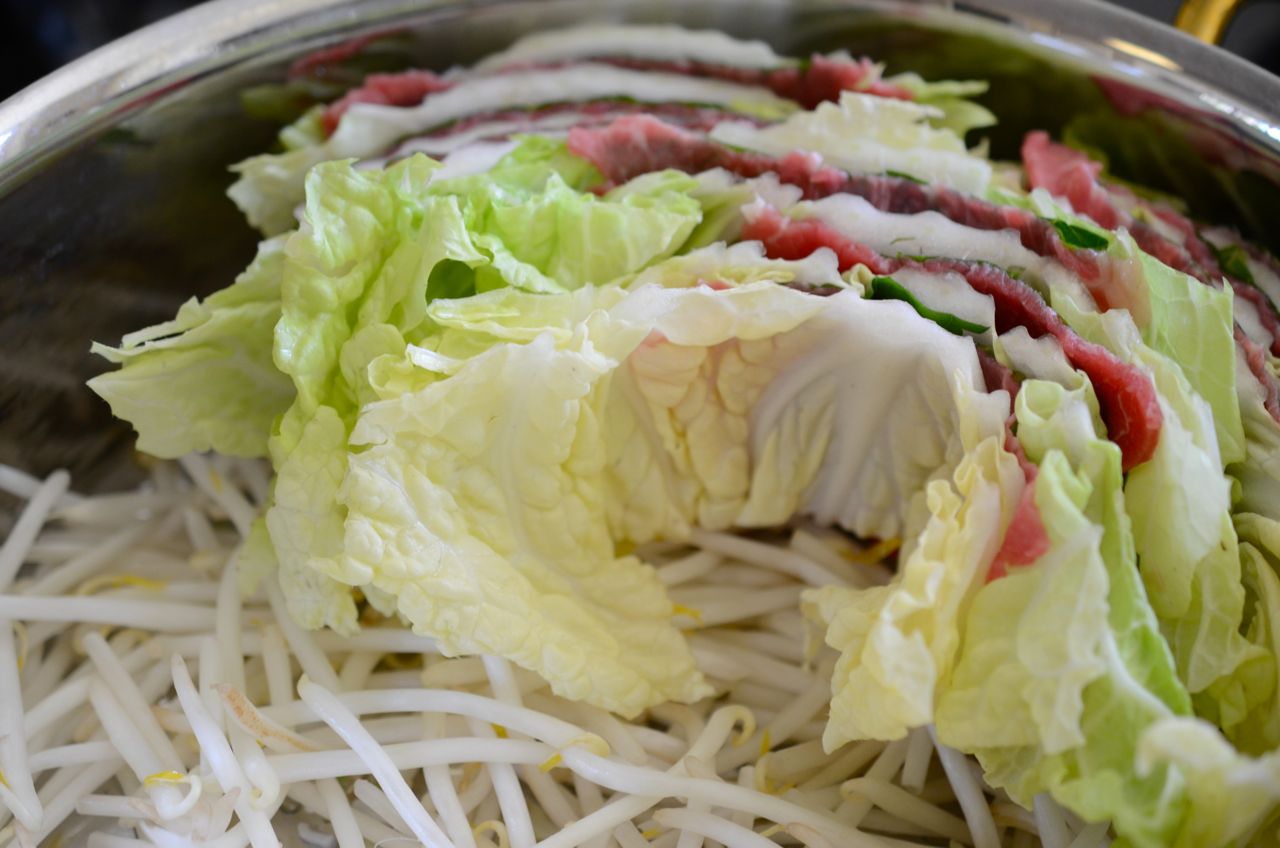

- Add anchovy stock until the ingredients are almost covered and top with some gonnyaku (miracle) noodles.
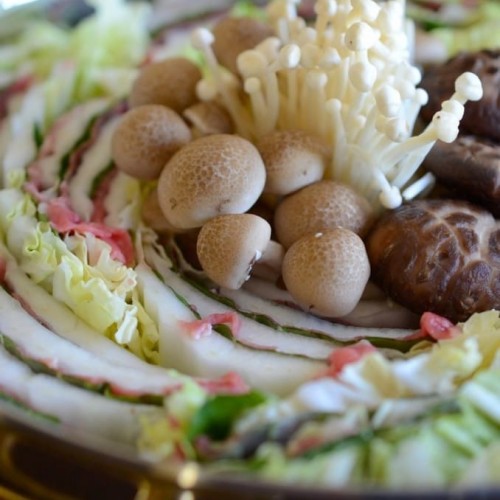
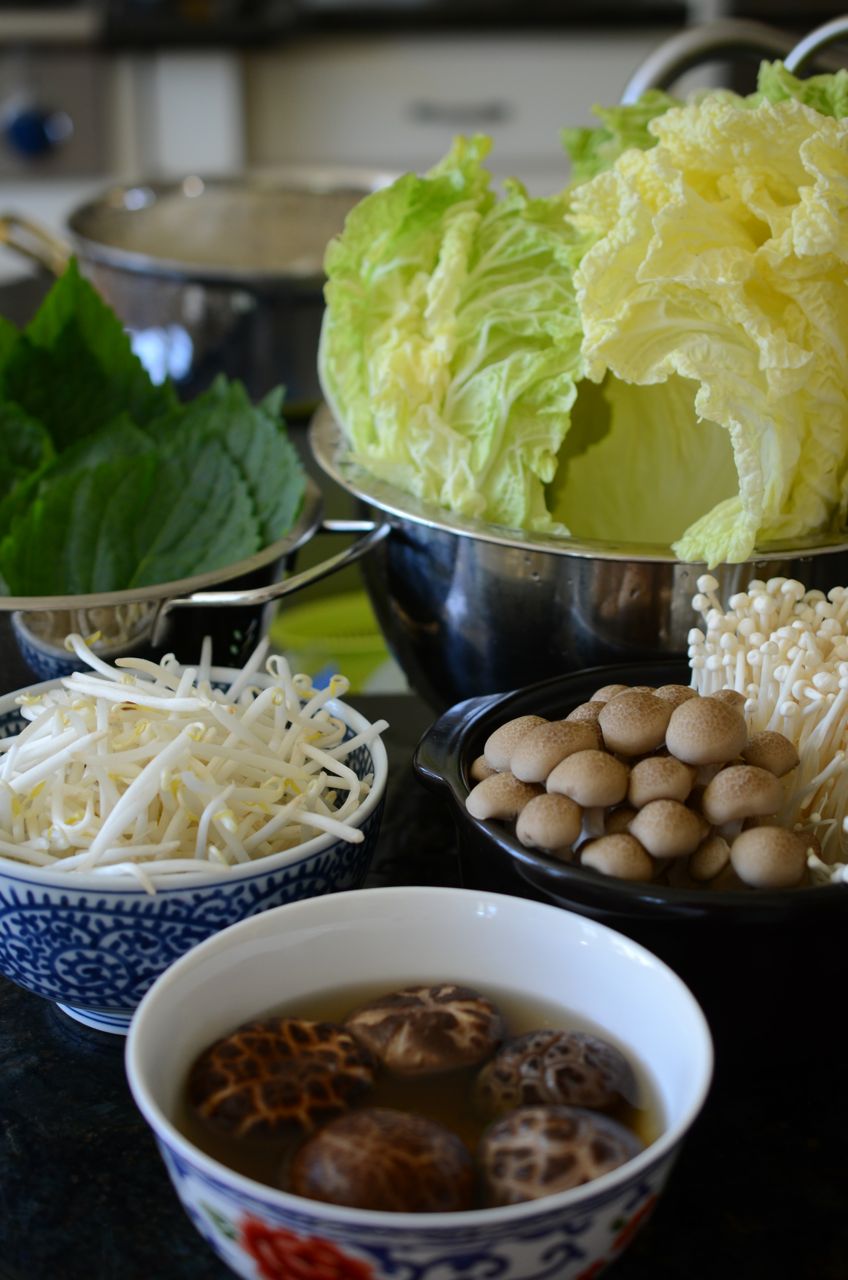
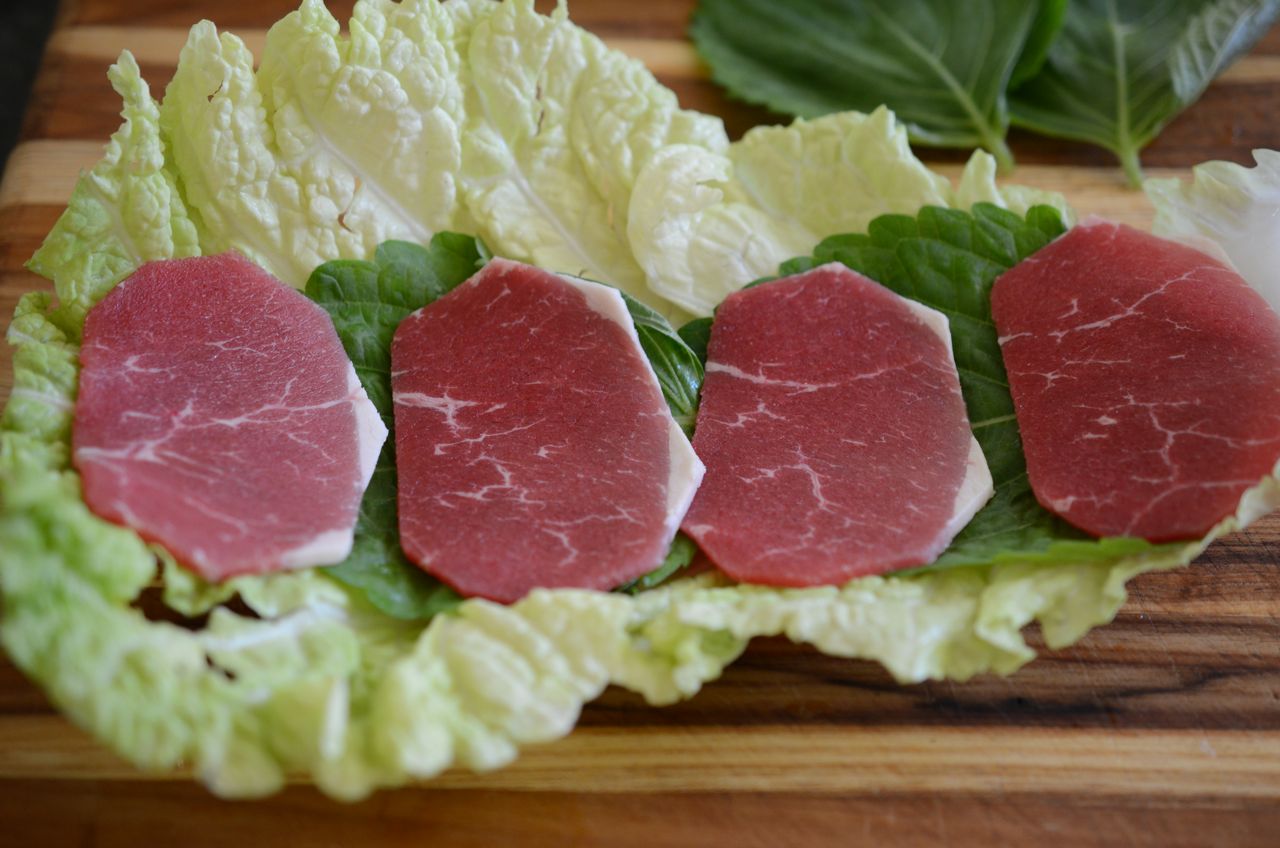
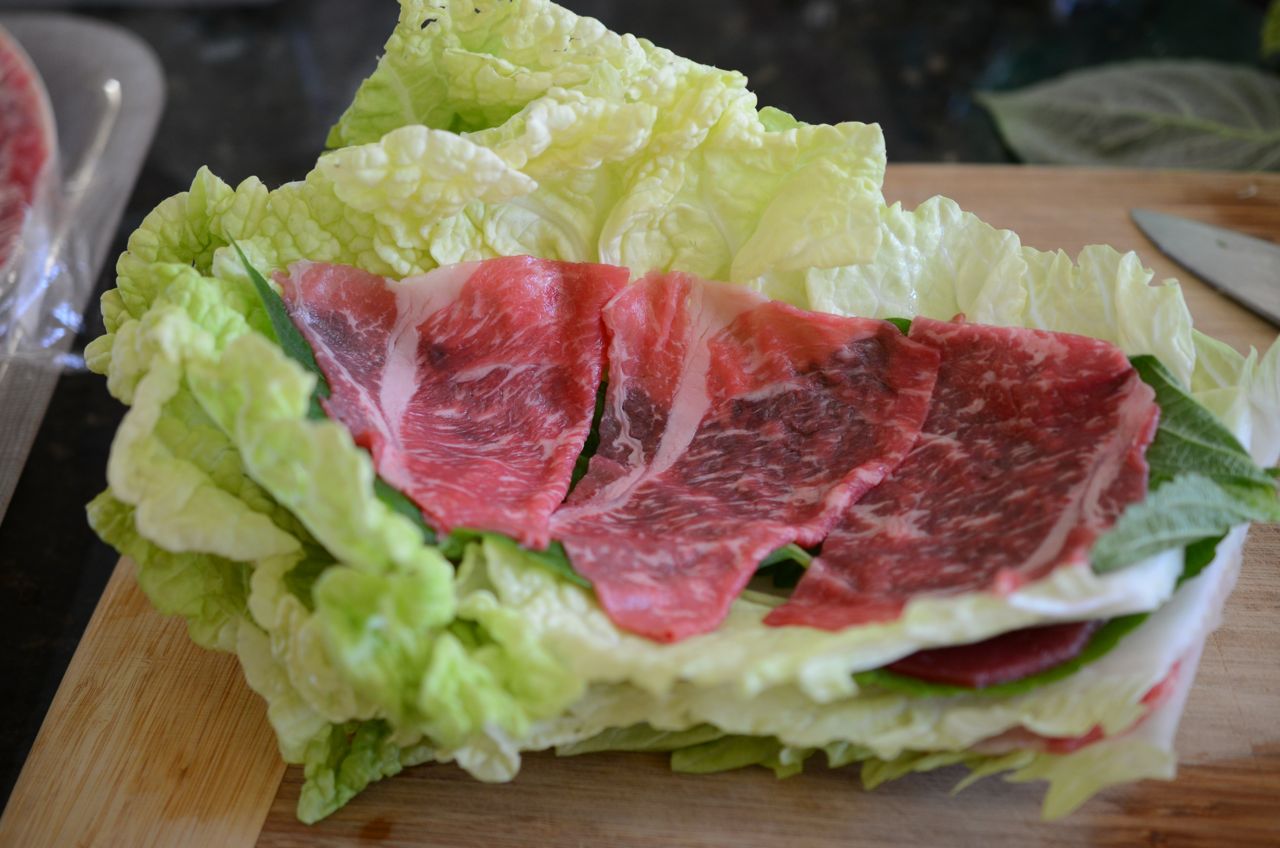
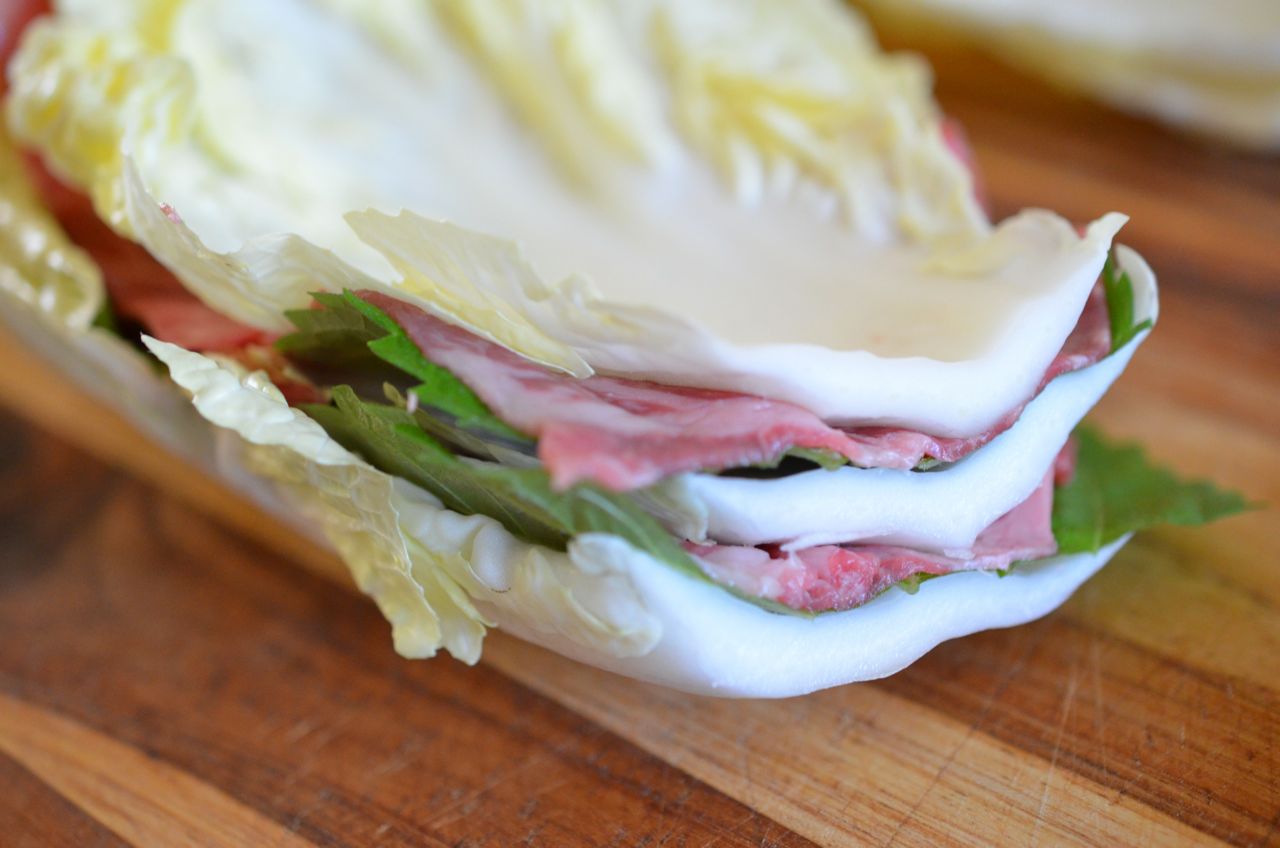
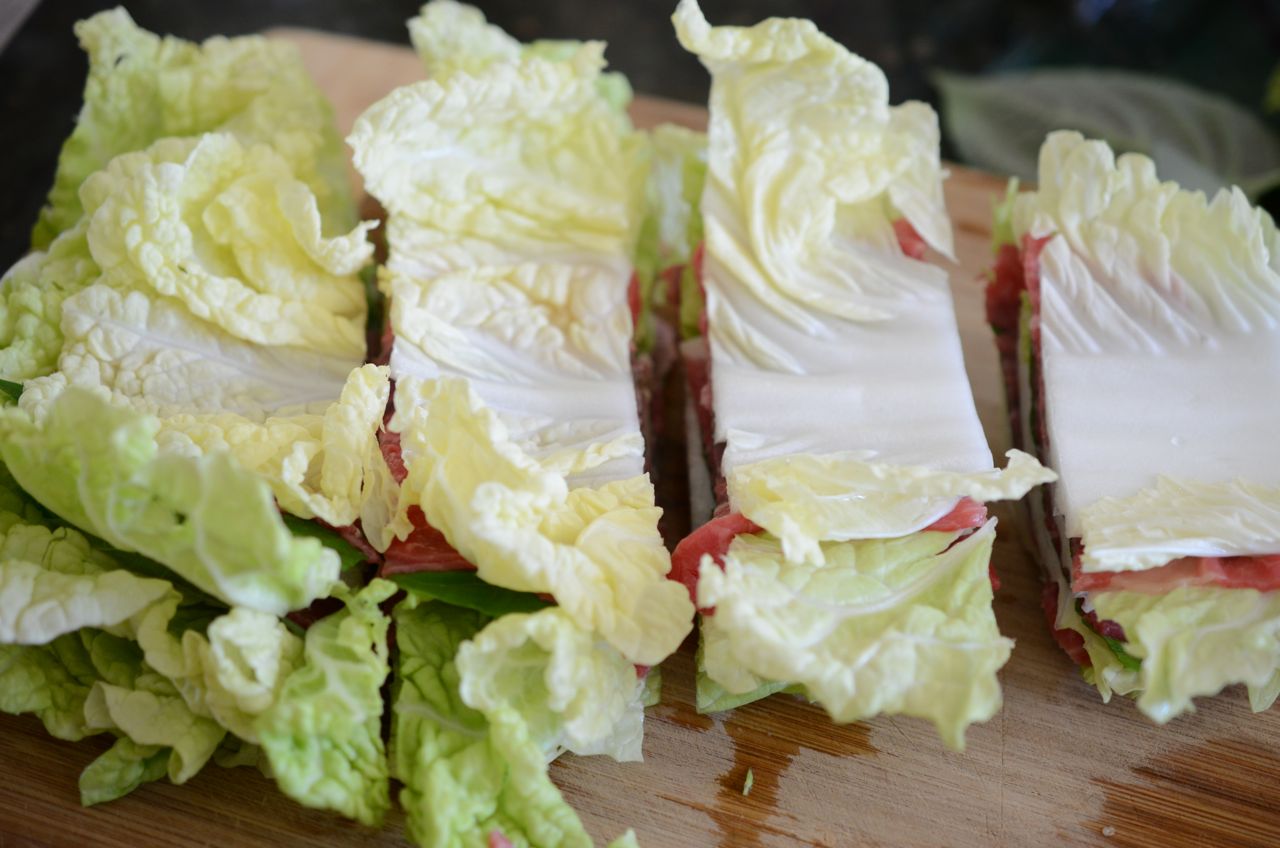
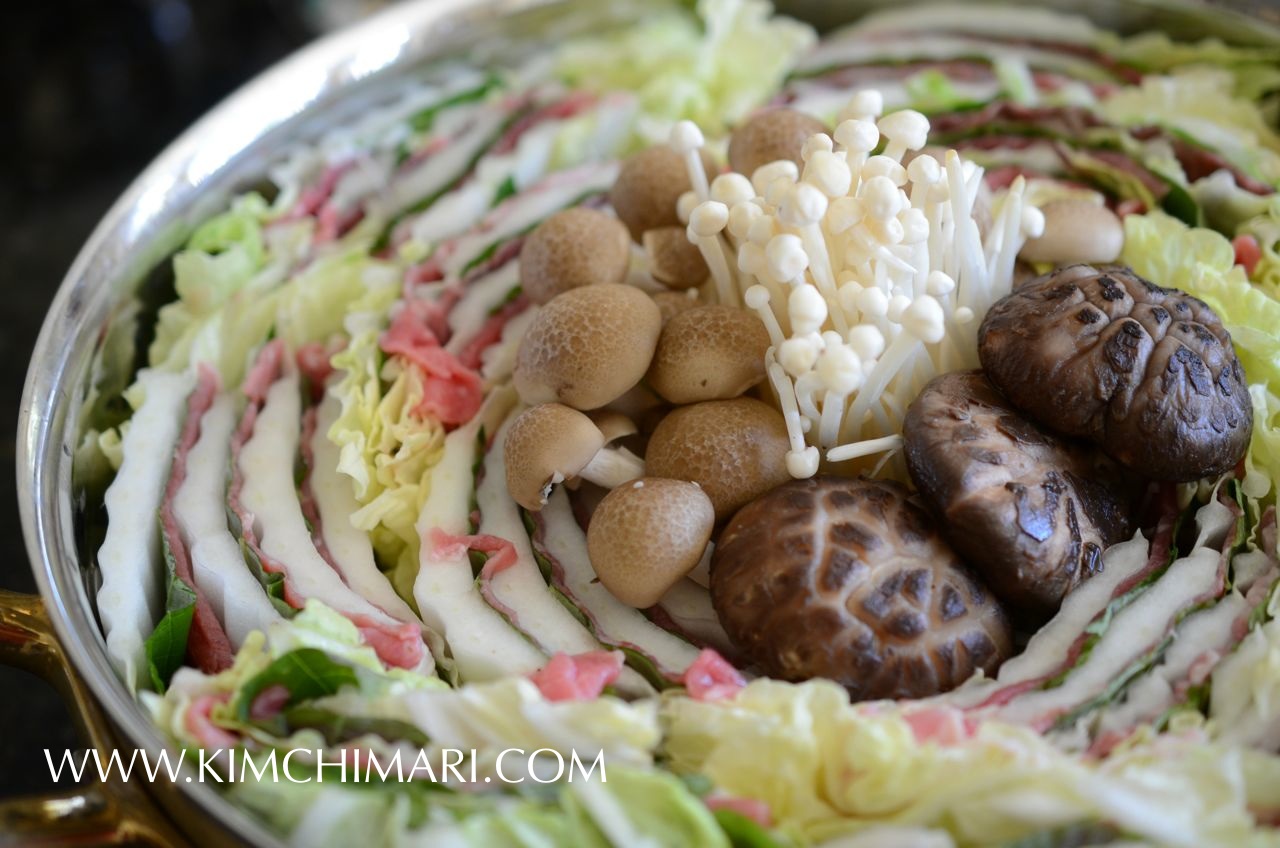
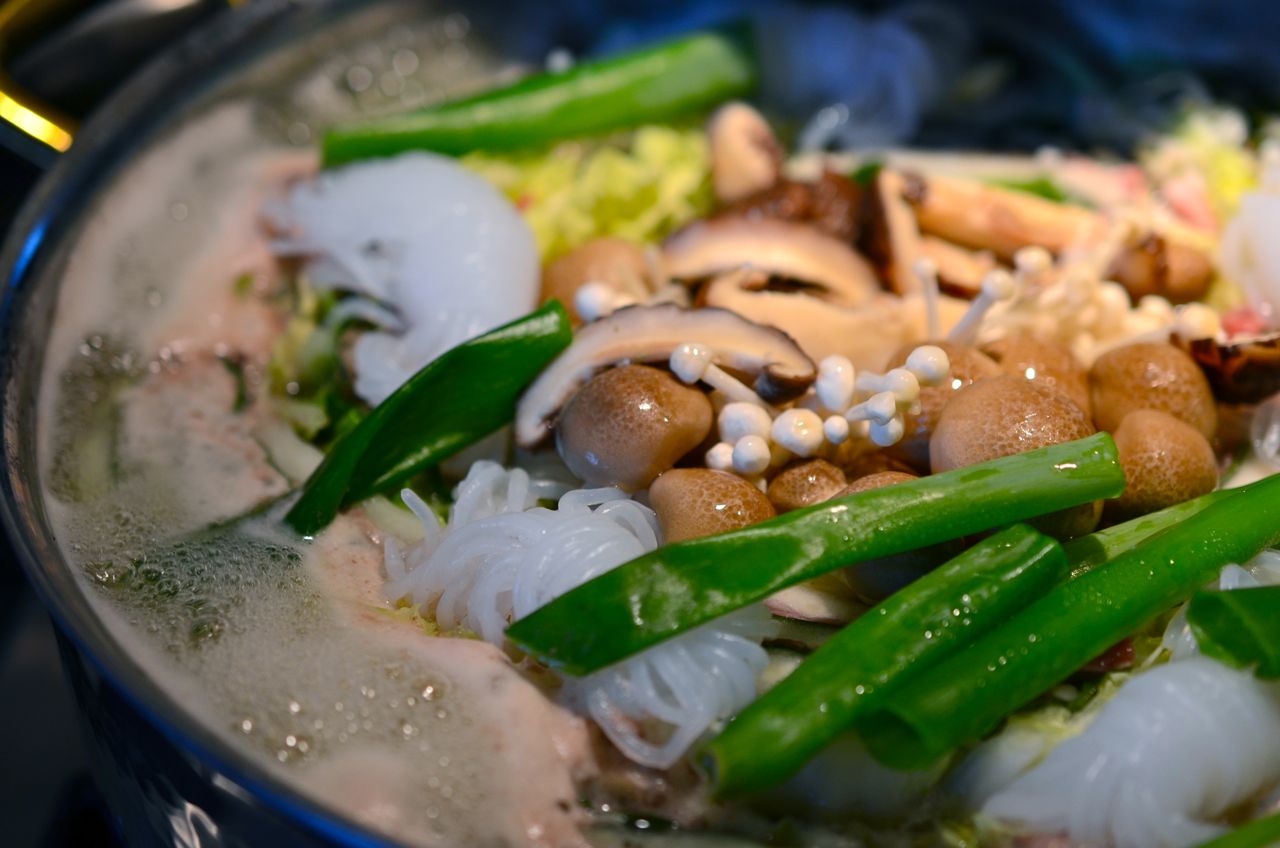
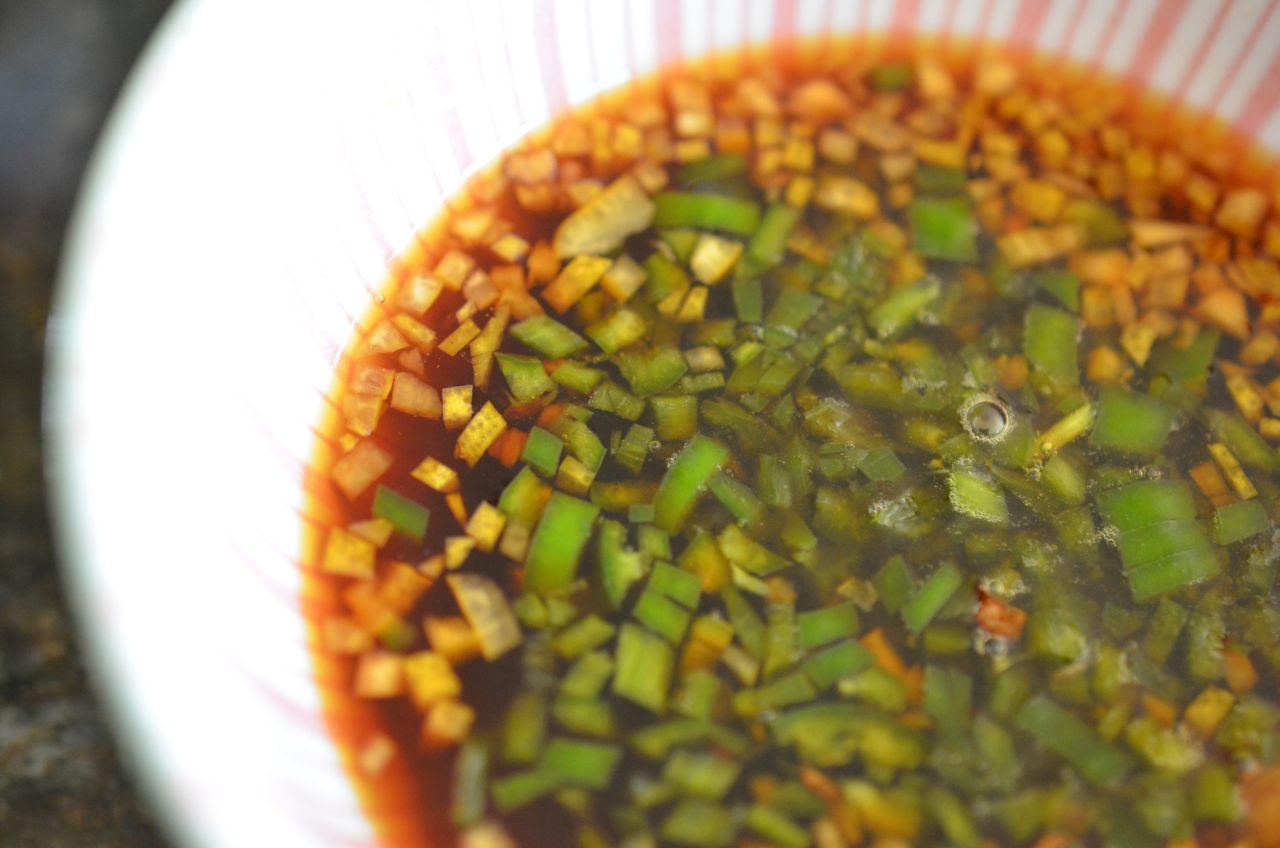
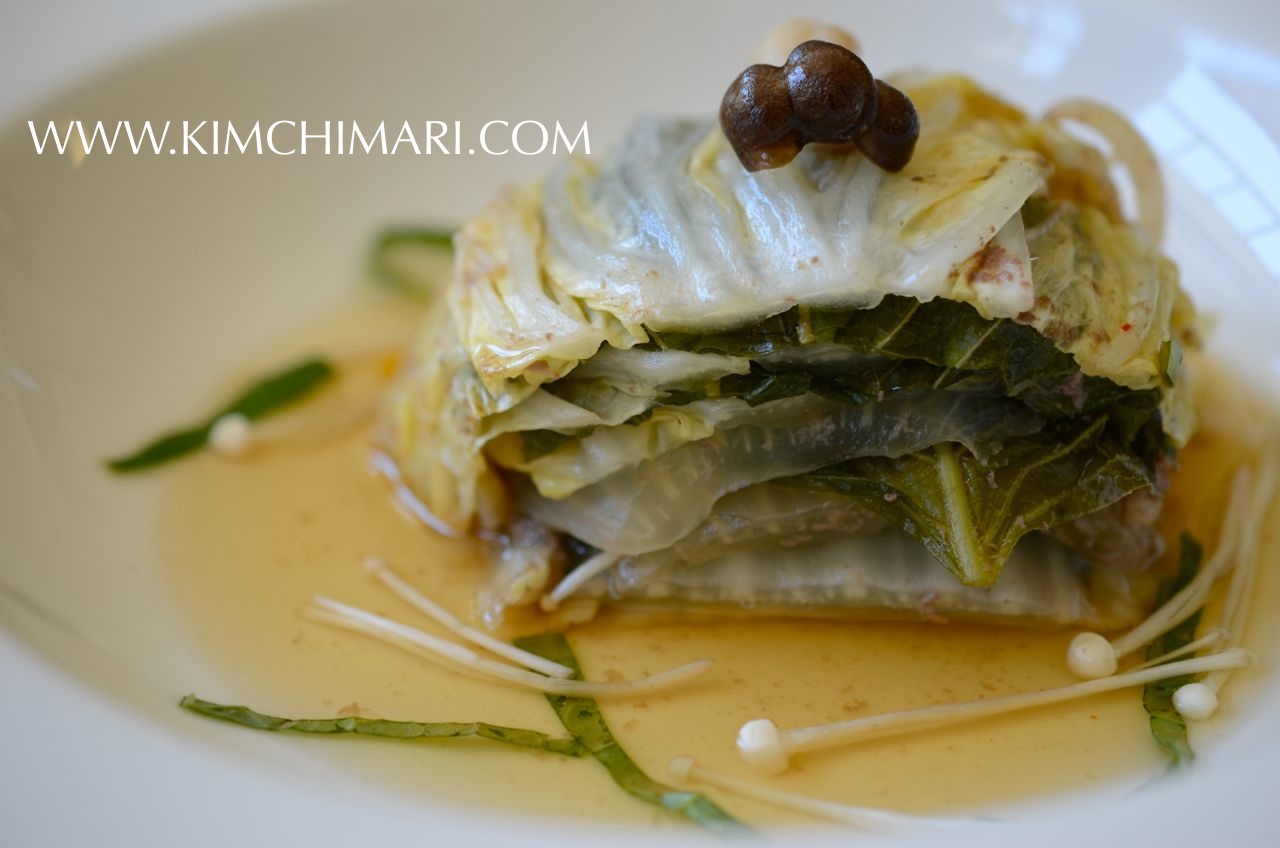
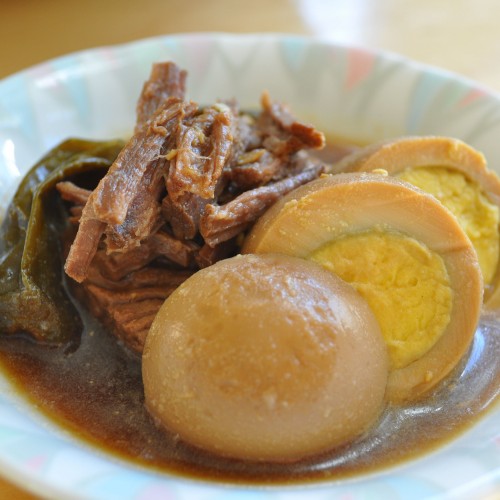
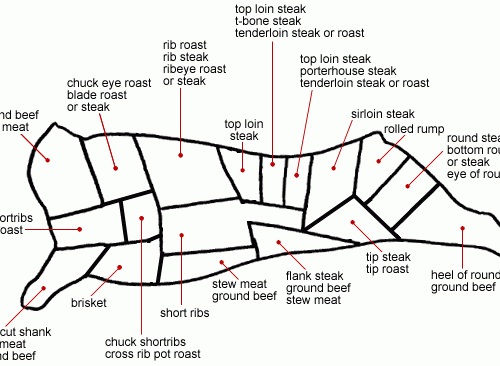
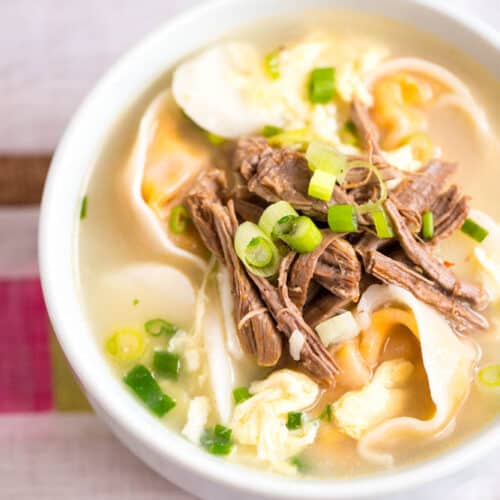
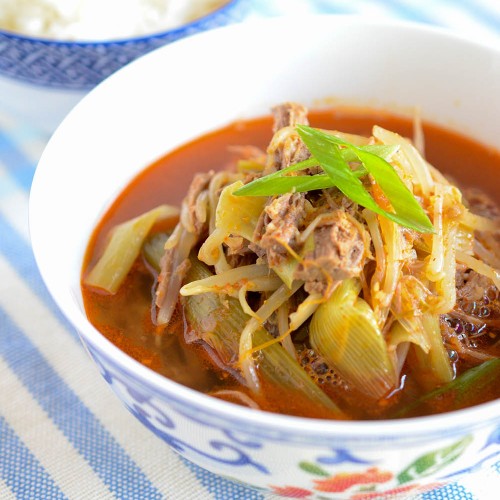
















I was hesitant about the lemon and zest, but the sauce is phenominal!
I’m so happy to hear that!! Thank you soo much for the kind feedback.
Ive always known this to be mille feuille nabe. Why is it stated as shabu shabu in parenthesis? Isn’t shabu shabu an entirely different dish & cooking process?
Valid point. I added the shabu shabu in the sense that they have similar flavors once all cooked but you are correct in that the cooking process and appearance is different. I decided to add the word shabu shabu because I was afraid people won’t understand what mille-feuille nabe was. Thank you for the feedback.
Ah ok, I see what you mean now. Yes the word gives identity to a similar food so those that don’t know can instantly associate, that makes sense. Thank you for clarifying!
Thank you for understanding my reasons and thank you for reading my response. Have a great day!